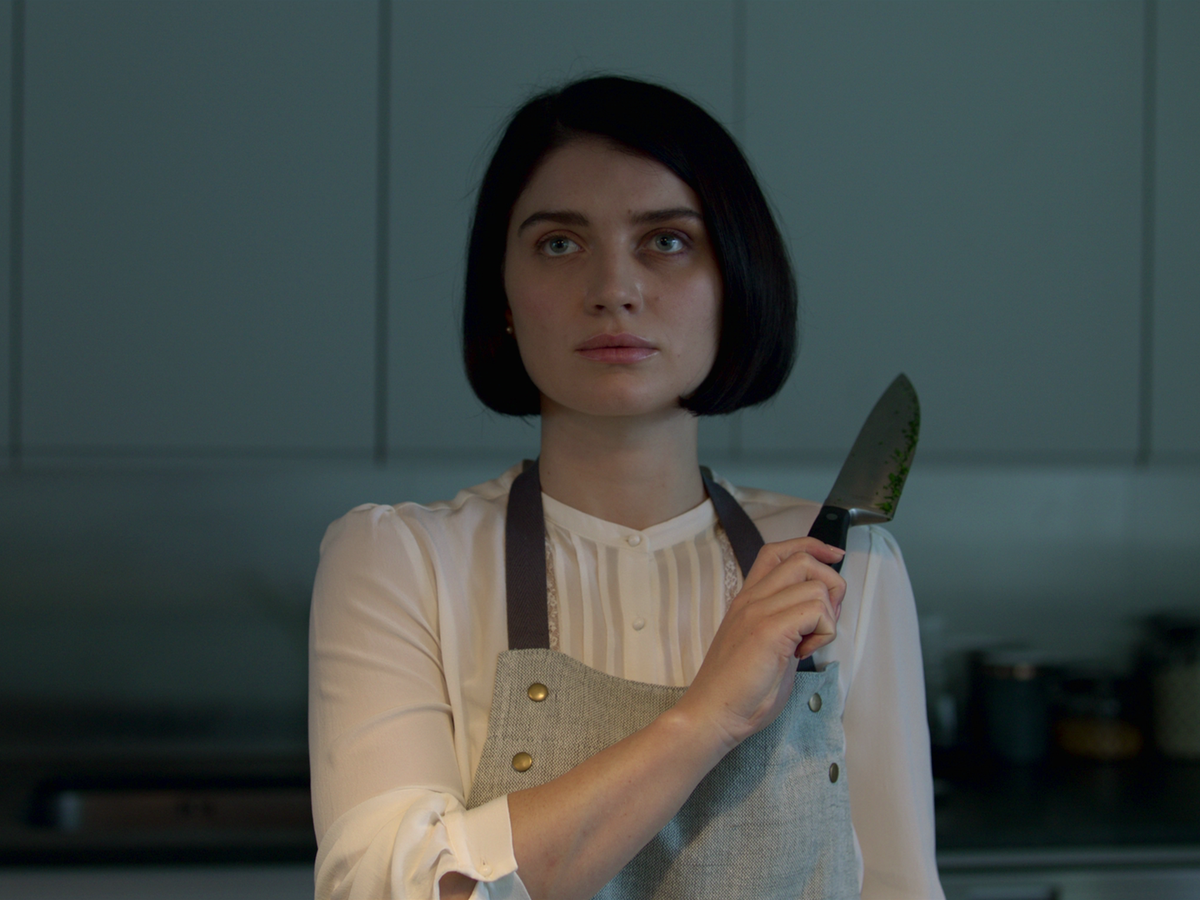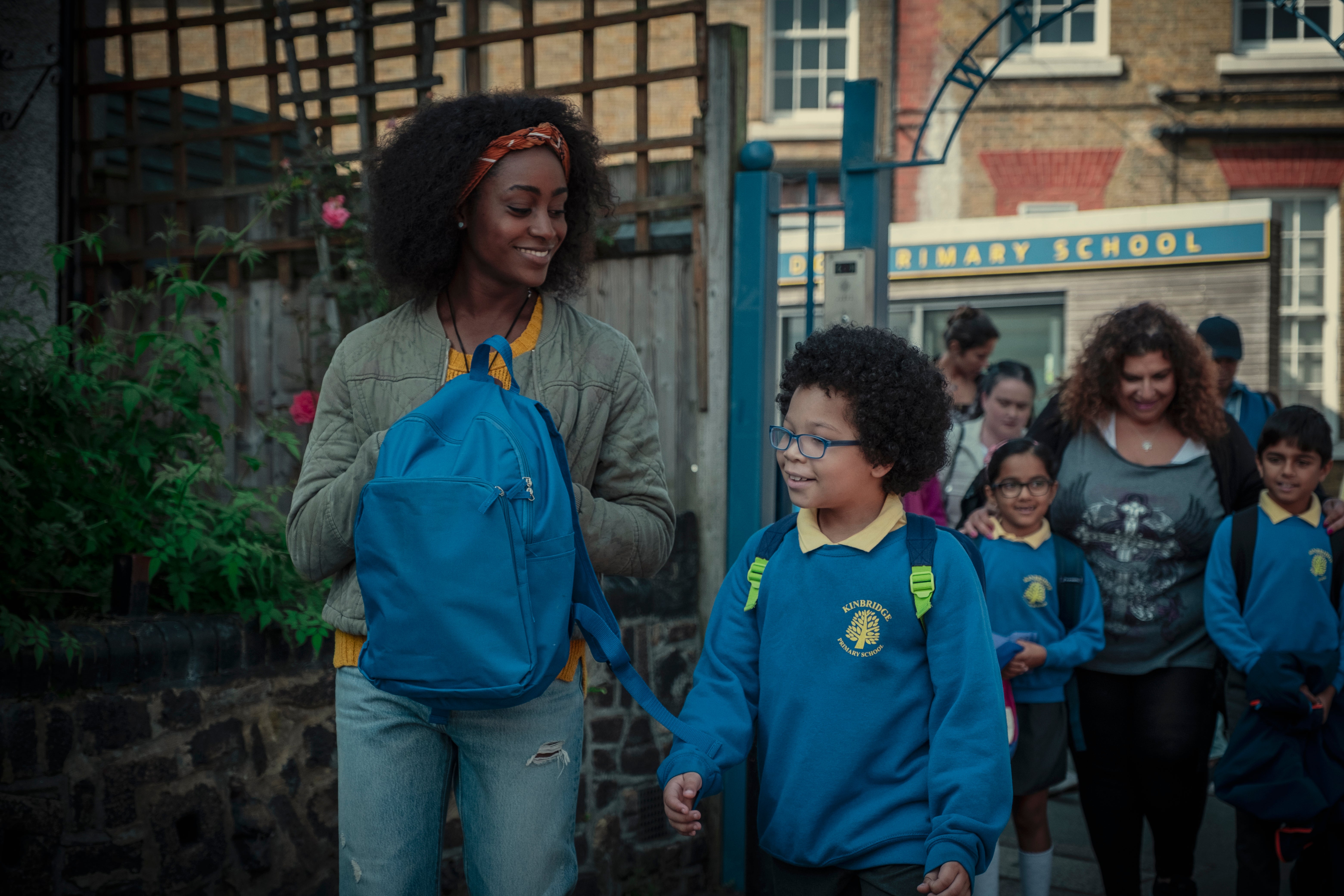Behind Her Eyes is TV with an identity crisis
The hit Netflix series with the wild twist has had people asking if it’s homophobic, transphobic and more, but switching from relationship drama to supernatural sci-fi at the last minute is just taking viewers for a ride, says Micha Frazer-Carroll


Your support helps us to tell the story
From reproductive rights to climate change to Big Tech, The Independent is on the ground when the story is developing. Whether it's investigating the financials of Elon Musk's pro-Trump PAC or producing our latest documentary, 'The A Word', which shines a light on the American women fighting for reproductive rights, we know how important it is to parse out the facts from the messaging.
At such a critical moment in US history, we need reporters on the ground. Your donation allows us to keep sending journalists to speak to both sides of the story.
The Independent is trusted by Americans across the entire political spectrum. And unlike many other quality news outlets, we choose not to lock Americans out of our reporting and analysis with paywalls. We believe quality journalism should be available to everyone, paid for by those who can afford it.
Your support makes all the difference.Warning: contains major spoilers
Let’s get one thing out of the way before we commence: Behind Her Eyes – the smash-hit Netflix series with the shocking twist that everyone’s talking about – is not good. The drama, which follows the story of divorced London mother Louise (Simona Brown), who has an affair with her psychiatrist boss David (Tom Bateman), never seems to know quite what it’s doing, or where it’s going.
Based on a novel of the same name by Sarah Pinborough, the series is split into six, hour-long instalments, which feel as if they contain around 20 minutes of action each. The first episodes painstakingly detail the ins and outs of receptionist Louise’s affair with David; her budding, secretive friendship with David’s creepy wife Adele (Eve Hewson); her dreams; the mundanities of her life at work; whether her son should be allowed to go to France; and flashbacks to Adele’s stay in a psychiatric facility after the loss of her parents in a house fire.
We learn that it was here that Adele met Rob (Robert Aramayo), a gay working-class man and recovering addict with whom she fosters a close friendship. So far, so psychological thriller, despite it being agonisingly slow (seriously, even the affair scenes manage to be spicelessly yawn-inducing).
This is where it all goes a bit weird, and where the spoilers come in. By the time we reach episode five, we come to learn that Adele has a history of engaging in the supernatural practice of "astral projection", ie using the disembodiment of the soul to travel to other places, and possess other people. Bear with me: in the final episode, we discover that Adele is not in fact Adele – she has been body swapped with Rob, who has since killed his own original body with a lethal injection of heroin. In a dramatic sequence involving another house fire, Rob then body swaps out of Adele and into Louise, going on to kill Adele’s body (also using heroin) so he can finally be with David, with whom he is, presumably, in love. Are you still following? If you aren’t, fear not; one of the most common criticisms of the show is its choice to throw a number of confusing curveballs in its final moments.
The novel was described by the author herself as a “Marmite” story, and while the dramatisation was praised by some critics as “genre-bending”, I personally was deeply confused by its choice to move clunkily from romcom to drama to thriller to sci-fi as the story unfolded. As Marianka Swain wrote for The Telegraph, audiences can put up with a lot of twists and turns, but ultimately we want to feel like we understand the rules of the universe we’re entering into. There’s nothing inherently wrong with the story having a supernatural ending, but we need to understand that paranormal shenanigans are within the realms of possibility, at least before the halfway point. Disconcertingly, Behind Her Eyes doesn’t display a hint of any sci-fi quality until the penultimate episode, and so the introduction of the astral projection plotline feels less like a clever twist, and more like a disorienting tailspin.
There has been some discussion about whether the show’s body-swapping narratives are damaging to marginalised people, given that the characters who swap bodies span race, class, gender and sexuality. Rob, who is a gay white man, body swaps with Adele, a white woman, before, in the last episode, finally body-swapping with protagonist Louise, a Black woman, so he can be with David, a (presumably straight) man. Ultimately, the soul of a white man ends up inhabiting the body of a Black woman, so he can spend the rest of his life with the man he wants. Swain points out that, although it may not have been the writers’ intention, Rob’s actions are consistent with societal stereotypes of gay men being predatory. The storyline could also slot alongside cinematic tropes surrounding cis men posing as women to commit murders and deceive others – which, although not a trans plot arc in itself, has been weaponised by transphobic people (see JK Rowling’s newest book Troubled Blood).

Other critics have argued that there are racial undertones to Rob using Louise’s body as his final vessel. Rob’s astral hijacking of a Black woman’s body is certainly comparable to the Jordan Peele horror film Get Out, which (more spoilers ahead) is centred around the premise of white people trying to gain eternal life by transplanting their brains into the bodies of Black people. But as Rob is our antagonist, it’s not as if Behind Her Eyes glamorises his actions, or positions them as virtuous. Nor does it attempt to make any sort of racial commentary on his choice to use Louise as a means to an end, à la Get Out. In fact, since the creators of the show used “colour-blind” casting, and it is never explicitly mentioned in either the book or the script that Louise is Black, it’s hard to apply any sort of racial analysis to the ending. While there may be racial undertones to Rob’s decisions, the writers never bother to unpack them.
This points to a bigger problem with the show: the whole thing is just so sloppily executed that it feels doubtful that the makers put any thought into these potential readings. The fact that, firstly, the only gay character in the show happens to be a cis male predator who assumes the identity of a woman, and secondly, that the Black protagonist’s body is used as a means to an end, simply reeks of lazy writing that is overly reliant on old TV tropes. Beyond everything, Behind Her Eyes is a poorly written show, largely ill-equipped to deal with any of the problems it presents.
I’m perplexed by the wider TV landscape’s commitment to these lacklustre psychosexual thrillers. It feels as if, during a period where we’re all scraping the bottom of the barrel when it comes to TV, we’re being trapped by this easy-win style of TV in particular. From Sky TV’s (genuinely thrilling) The Undoing to ITV’s Cheat (last month acquired by Netflix), I think I’ve had enough of murderous love triangles for a while. It’s a shame – given Behind Her Eyes’ spooky potential, it could have done something genuinely different with the genre. Instead, it feels like it has jumped ship and abandoned it all together, allowing for some clumsy oversights in the process.


